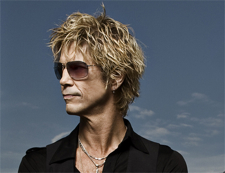Duff McKagan’s column runs every Thursday on Reverb. His ESPN.com column runs on Wednesdays.I am a product of the ’70s. To this day, a lot of how I think and act out on different scenarios are informed by the barrage of childhood imprints that happened during that decade. FM radio. The Vietnam War. Punk rock. The Nixon impeachment. PBS television.Television, for me as a kid, was not at all the babysitter it is now; there just weren’t that many good shows and only five channels back then: CBS, NBC, ABC, PBS, and a local channel that played reruns of older shows. Going outside was just a funner and better option then.Daytime network TV was filled with soap operas, much as it is now. But there were some forward-thinking exceptions in the day, like the weirder-than-weird Mary Hartman, Mary Hartman. Nighttime network TV was just then experimenting with the “mini-series” concept–great events like Roots, Rich Man, Poor Man, and The Thorn Birds came to form in this arena.But PBS was always the sort of go-to place if you wanted something different. I guess it kind of still is, but there are just so many channels now that PBS just kind of gets thrown into the drone and hum of it all. But in the 1970s, Monty Python, Benny Hill, and The Saint were all very exotic TV shows. A chance to really escape to places with a different humor, or simply a different accent than our American one.Just this month, HBO has released a new full-length movie called Cinema Verite, starring Diane Lane and Tim Robbins. The producers of HBO have decided to sort of re-examine a 10-part documentary that PBS released in 1973 called An American Family. The original documentary planted a camera crew inside the home of a rich, seemingly decaying, Santa Barbara, California family. It was supposed to expose the viewer to the REAL America “behind closed doors.” The first reality show, one could say.I remember the TV event being something of shock to the American system back then. But at the age of 9 or so, I was obviously too young to really be able to understand the documentary and its multilayered complexities. From the outside, Bill and Patricia Loud and their kids (aged 16 to 21) seemed like a West Coast counterpart to the Kennedy’s Camelot: rich, good looking, and seemingly very happy. In reality, Bill was having numerous affairs, Pat was drinking herself into a dark and lonely corner, and the oldest son Lance was celebrating his homosexuality on camera, as his parents put on blinders to it all. Really quite fascinating.The late 1960s and early ’70s was a time in America when the innocence of the smiling and tanned superpower nation finally woke up and smelled the napalm which it was socially mired in. If you weren’t around yet to understand the transformation of the ’70s, catch HBO’s Cinema Verite for a peek inside.The interesting inside view that Cinema Verite shows is how the lead producer of An American Family probably manipulated the situation with the Loud family to get as much drama as possible.You must understand that this documentary was meant to be observation in its purest form, and the camera crew and producers were supposed to be an invisible element inside the home and in the Loud family in general. The producer may have done things like push Pat to ask Bill for a divorce on camera, and perhaps even pushed Lance to act as gay as possible when the cameras were rolling.We all know these days that “reality shows” are often far from “real,” but back when An American Family began to air, the Loud family went into complete shock at what they saw.I don’t usually give movie reviews here in this space, but this HBO film really got me thinking, and gave me some scope and history to real situations being filmed on TV these days. Enjoy!Follow us on Facebook and Twitter.
More Stories From This Author
Capitol Hill Block Party Artist Panel Series 2019
The Capitol Hill Block Party Artist Panel Series 2019 is free (no festival wristband required), all-ages, and takes place from…
By
Seattle Weekly • July 9, 2019 11:10 am
Golden Idols will release new EP
Seattle quartet returns with ‘Uneasy’
By
Seattle Weekly • June 24, 2019 5:30 pm
Travis Thompson, Wolf Parade headline Fisherman’s Village fest
The Everett Music Initiative festival, May 16-18 in Everett, will showcase more than 50 acts.
By
Evan Thompson • March 18, 2019 12:00 pm






